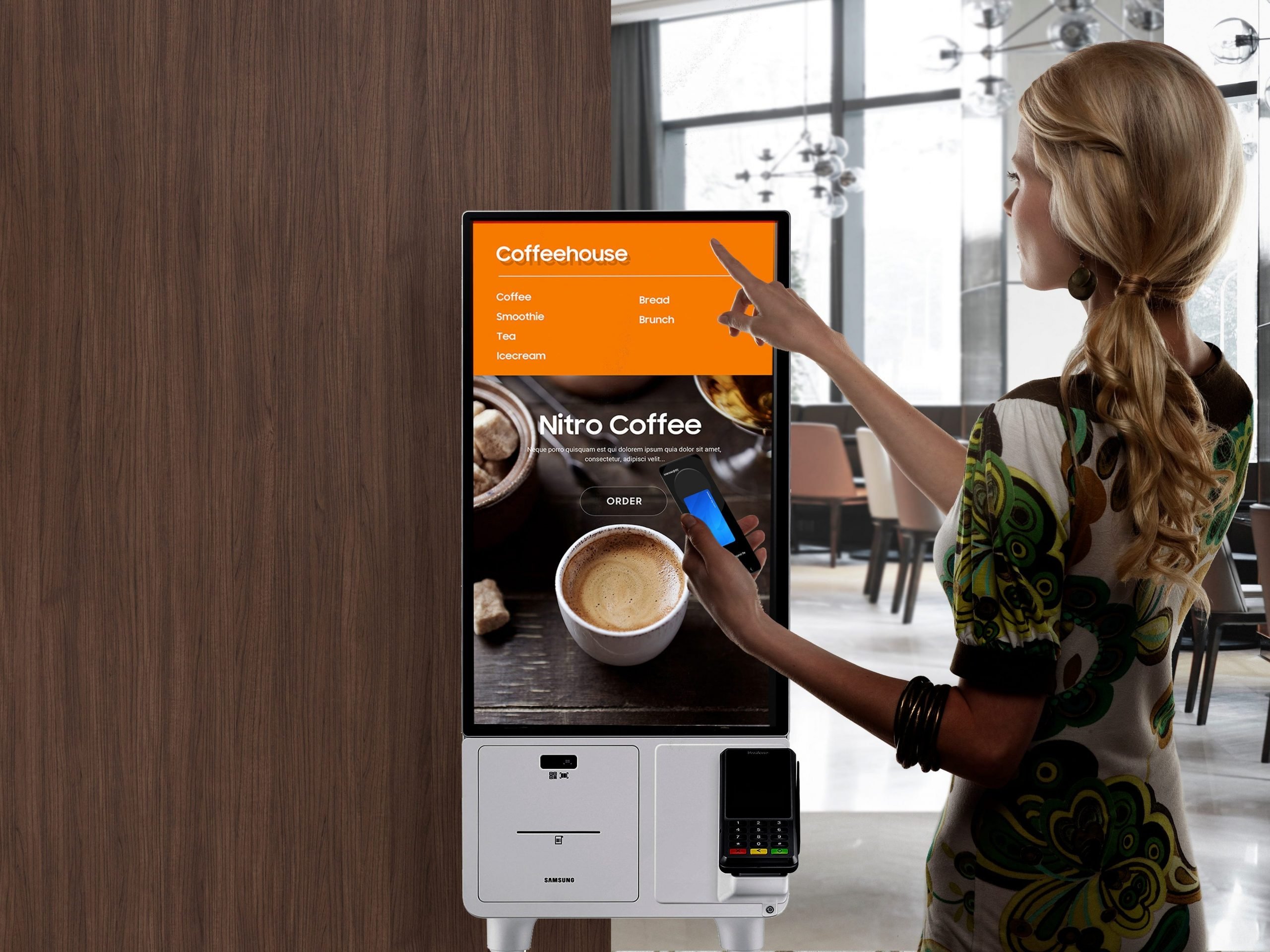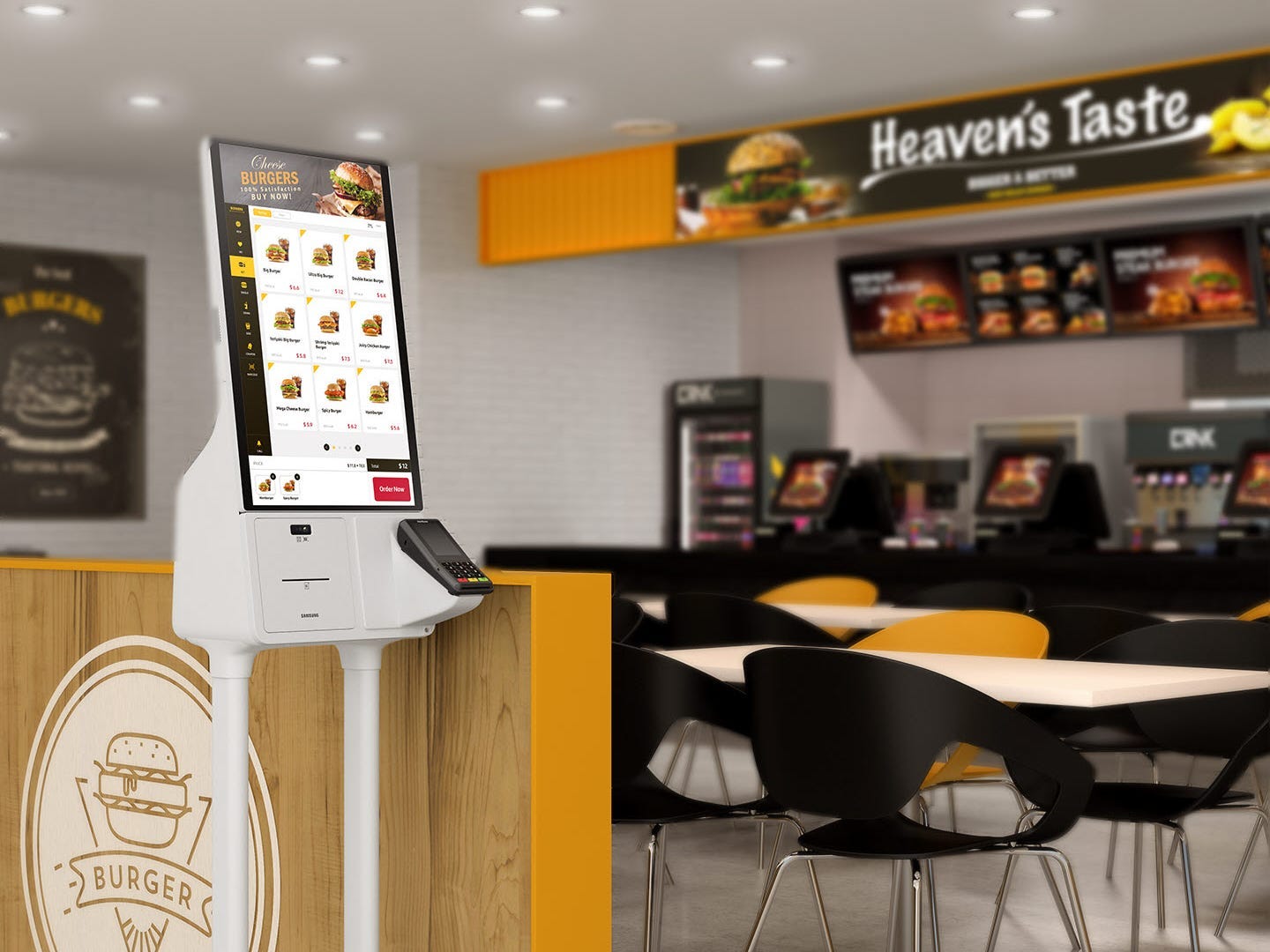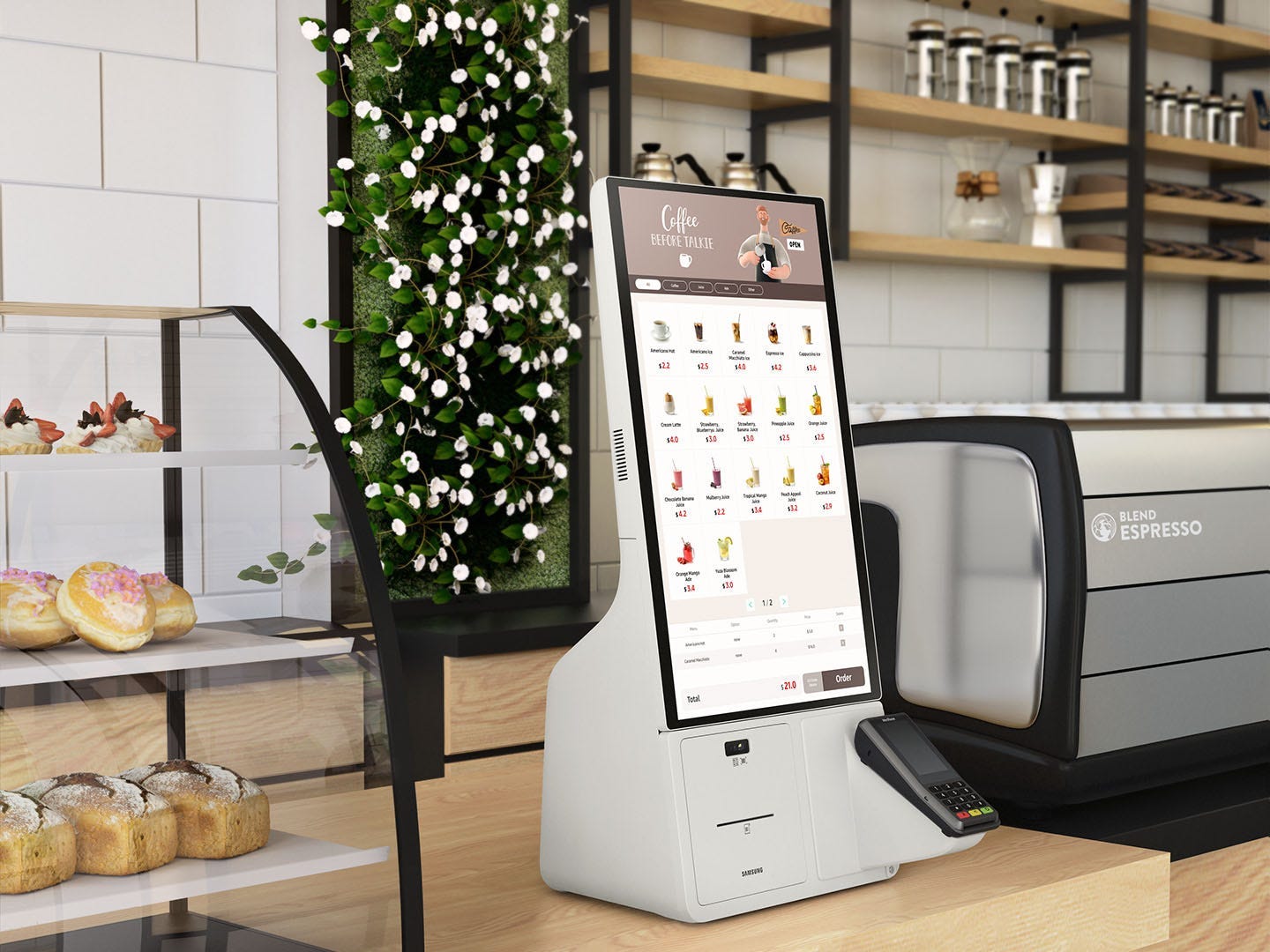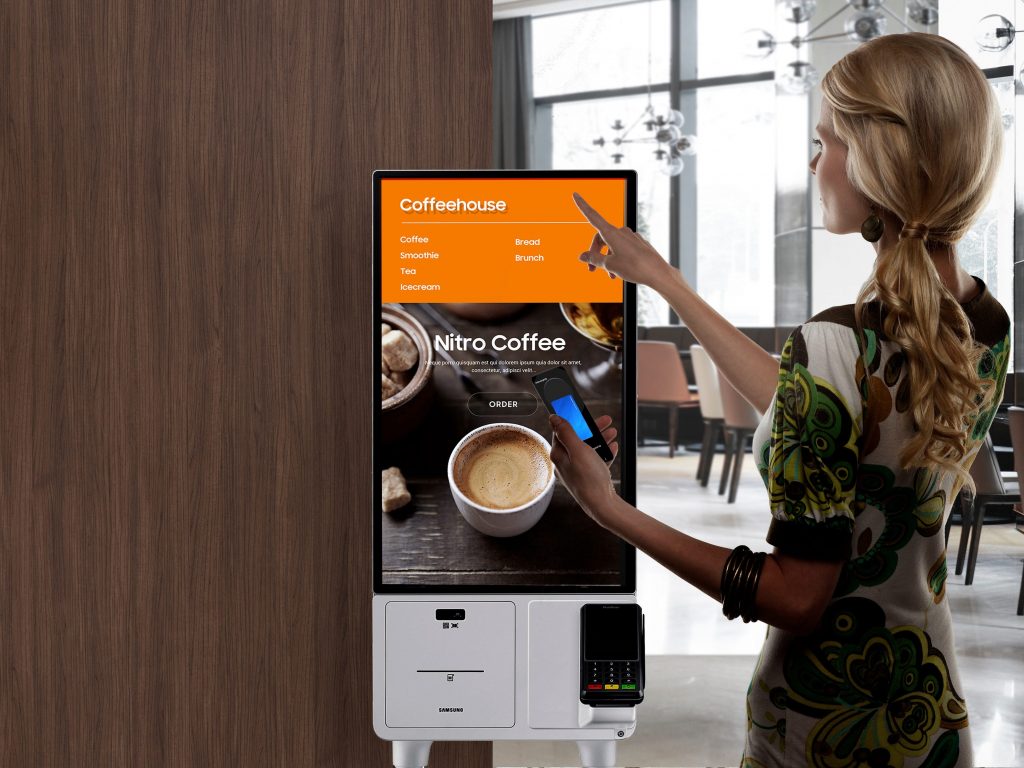
GRUBBRR digital kiosk
- Understaffed restaurants are turning to digital kiosks amid the labor shortage.
- They eliminate the need for some cashiers and lead to customers place bigger orders.
- The CEO of digital kiosk company GRUBBRR said its phone were "ringing off the hook."
More restaurants are turning to digital kiosks to overcome their staffing shortages.
Sam Zietz, CEO of digital-kiosk maker GRUBBRR, told Insider that demand for its products had boomed during the labor shortage.
"Our phones are ringing off the hook," he said.
Record numbers of Americans are quitting their jobs in search of better wages, benefits, and working conditions.
Restaurants have been especially affected, and it's hitting their bottom line. Restaurants have been boosting wages to attract more staff, cutting their hours, and closing their dining rooms – all of which are costing them money.
Restaurant owners say employees are overworked and service is getting slower, too. Zietz told Insider there's only one solution to the labor shortage, "and that's automation."
Digital kiosks are large touch-screen devices where diners can order and pay without needing assistance from staff.
Zietz said digital kiosks have two main advantages for understaffed restaurants: they ensure restaurants are able to take orders and open their doors, and they're cheaper than hiring cashiers as wages rise in the industry.

GRUBBRR digital kiosk
"Our core belief is the cashier is obsolete," Zietz said.
He added that he wasn't advocating making human labor redundant in restaurants. Rather, he said that cashiers could move into roles where they have more added value, like servers or cooks.
Zietz said that each of GRUBBRR's kiosks cost around $2,500, alongside $200 a month for software, and could save a restaurant around $6,000 a month on labor costs.
"The day you put it in, you're automatically saving money to the bottom line," Zietz said.
Customers place bigger orders at digital kiosks
Customers tend to spend between 12% and 22% more when ordering at digital kiosks, Zietz said.
At a chicken chain GRUBBRR has partnered with, the average order value when a customer orders at a cashier is close to $13, rising to almost $20 when they order from a kiosk, he said.
This is largely due to personalization, he said.
Kiosks are able to recommend add-ons to customers based on what they're ordering, like adding avocado to a burger or ordering a drink too. Customers can also scan their loyalty cards to access personalized recommendations or see their recent and favorite orders.
But the kiosks can also promote items based on the time of day, season, and weather, too, such as listing ice-cream higher up on the menu on sunny days.

GRUBBRR
Kiosks also display images of the items as customers scroll through the menus, which Zietz said makes them more likely to order them.
A former restaurant experience design consultant told The Wall Street Journal that diners are more likely to place bigger orders and add more substitutions when they order digitally because they can hide their embarrassment from servers.
Restaurants can also adjust their menus in real-time depending on ingredients availability and price changes, which Zietz said is especially useful amid the supply-chain chaos.
GRUBBRR has rolled them out at quick-service chains including The Chicken Shack, Sus Hi Eatstation, Capriotti's, OC Eateries, and Nature's Table, as well as stadiums, arenas, hotels, and schools.
It's not just digital kiosks. Zietz said GRUBBRR was rolling out its software in full-service restaurants using QR codes and tablets.
"I used to tell people we were a hyper-growth company," Zietz said. "Now I tell them we're a meteoric-growth company."
